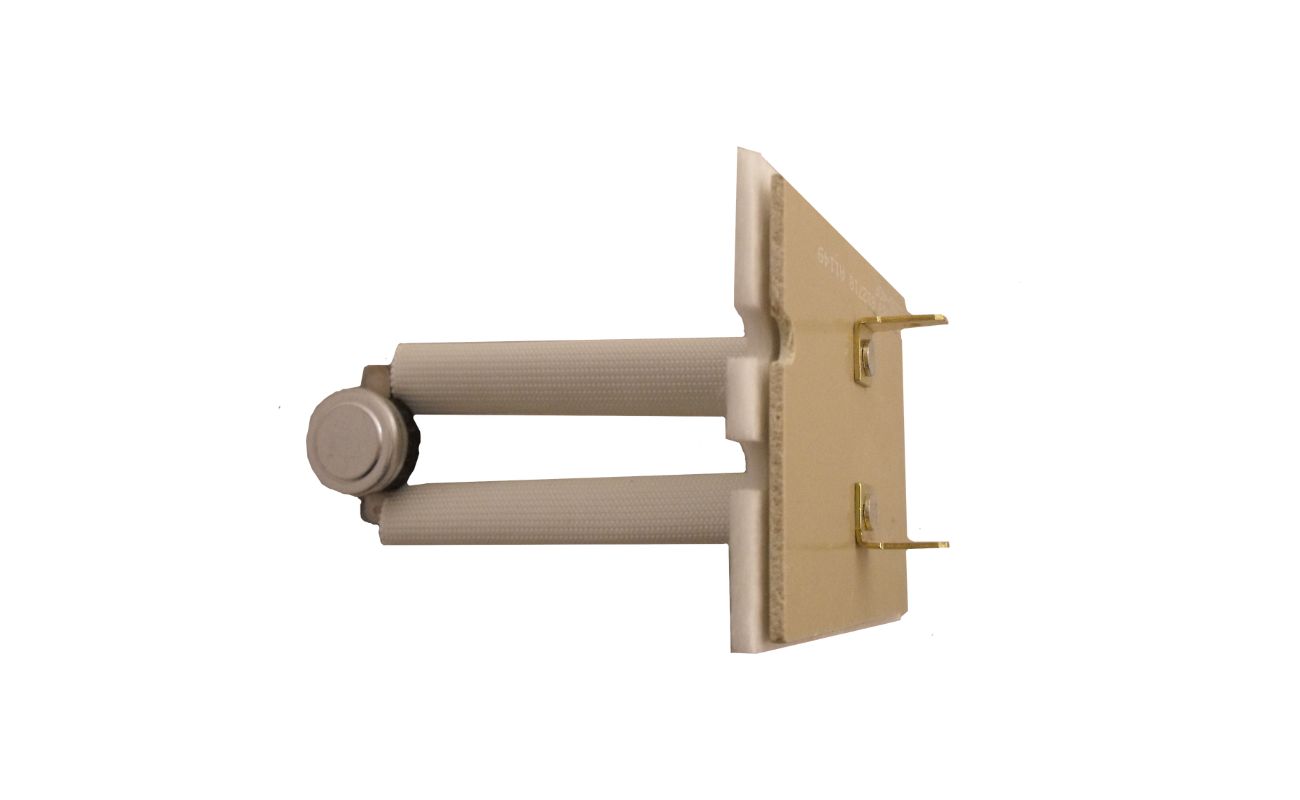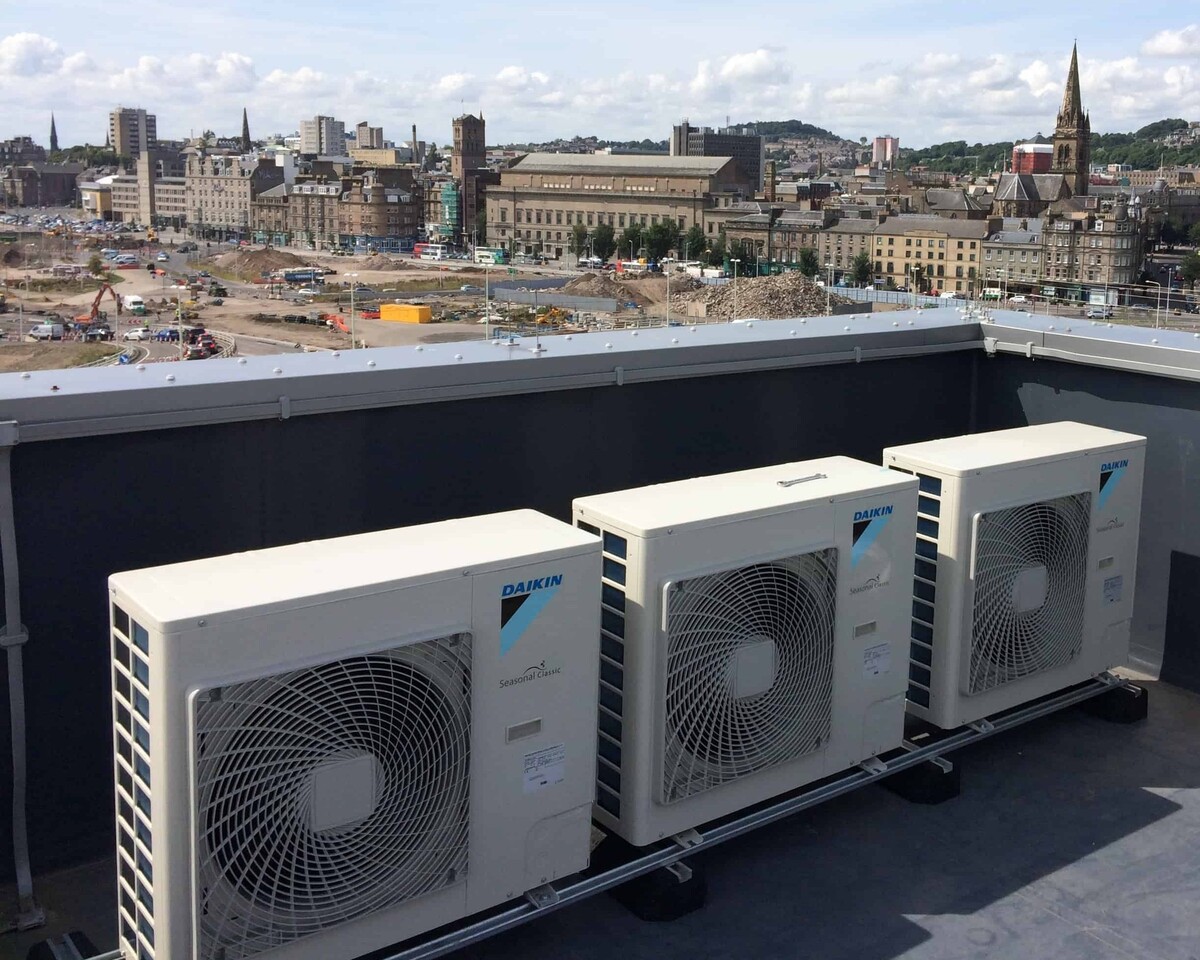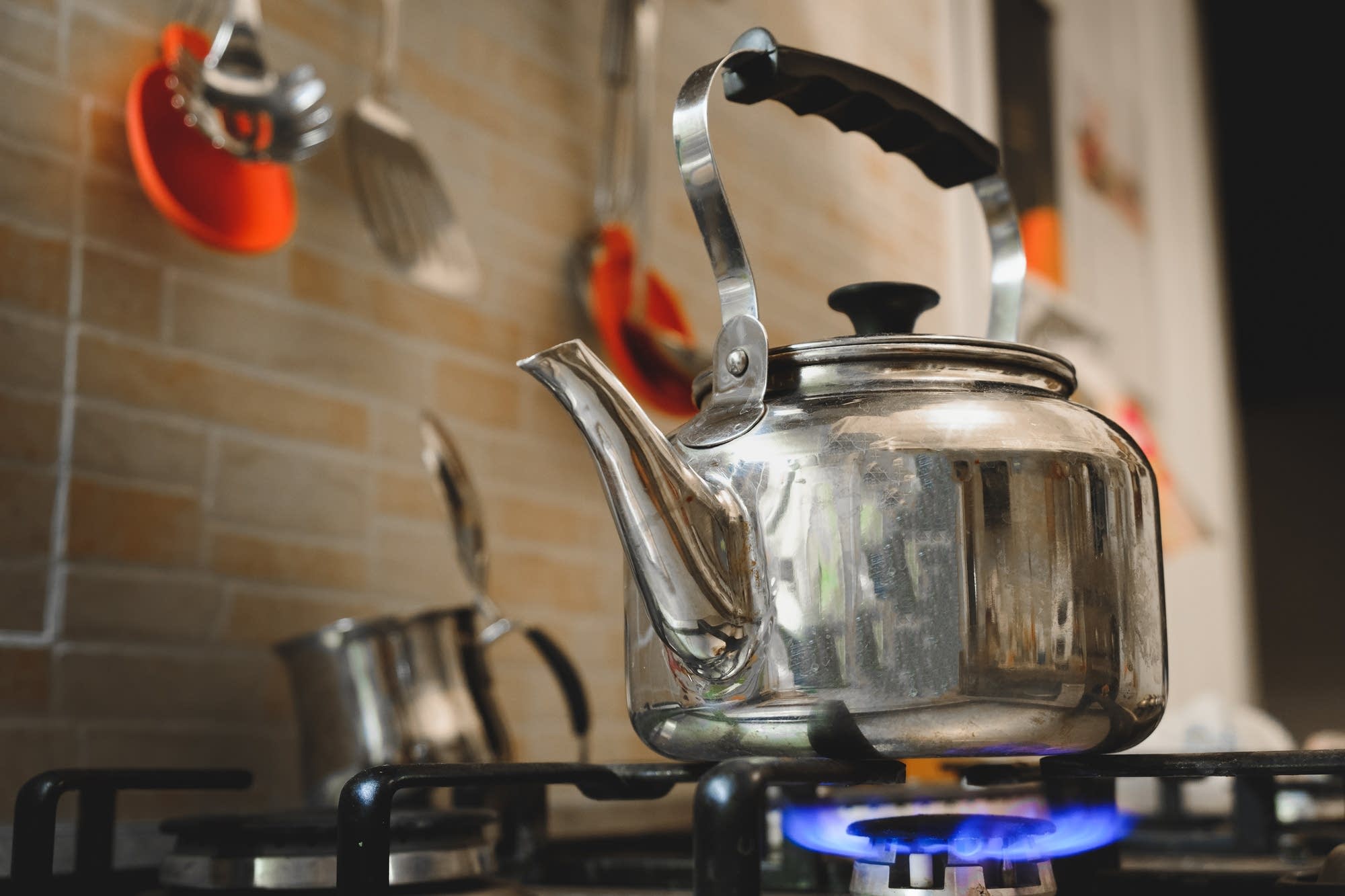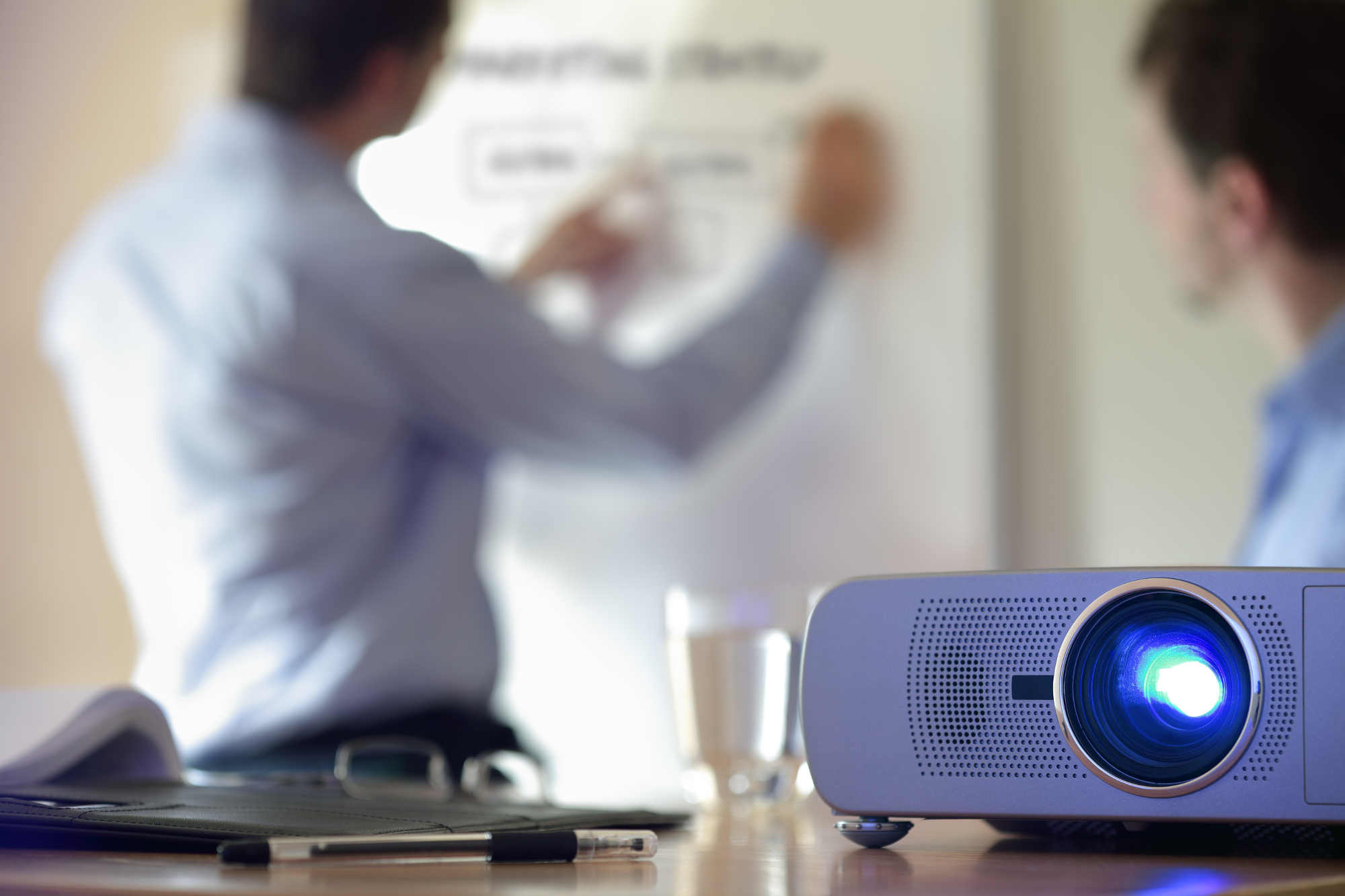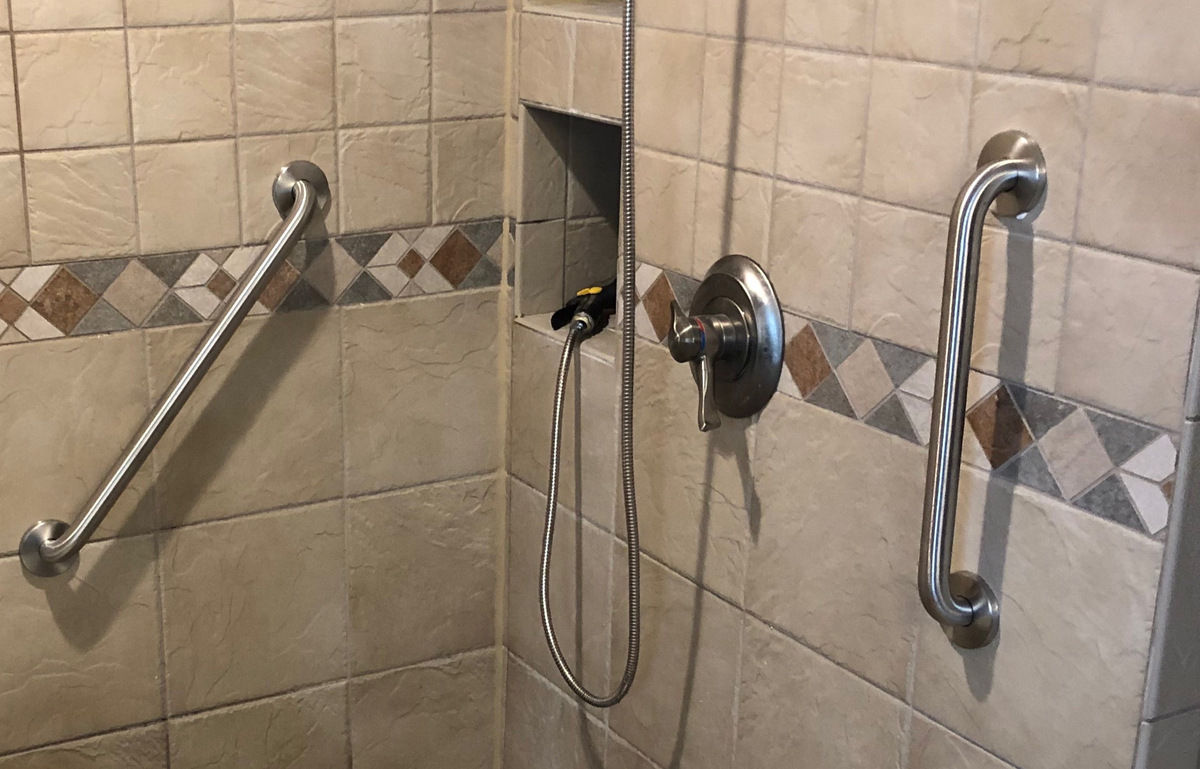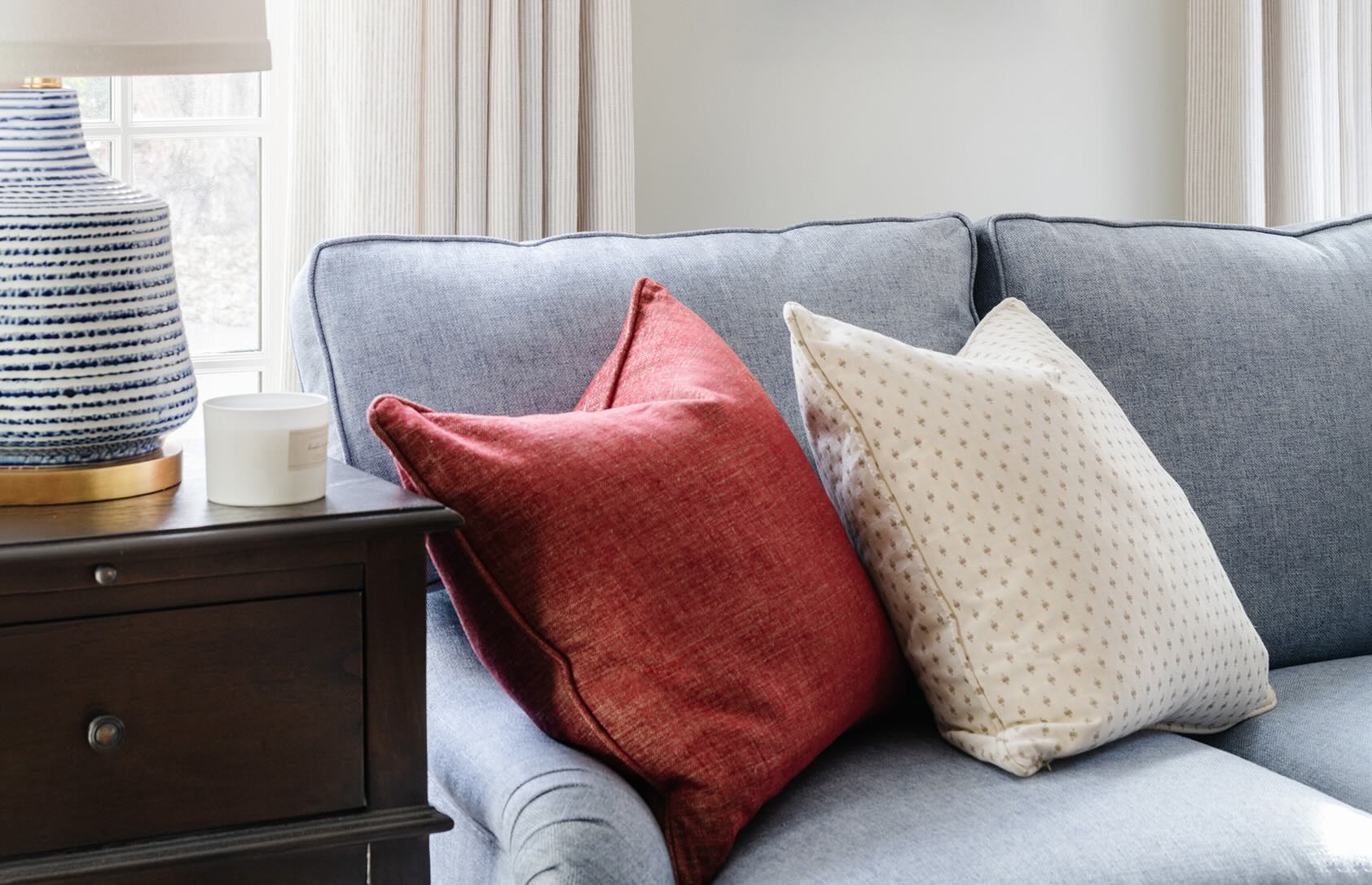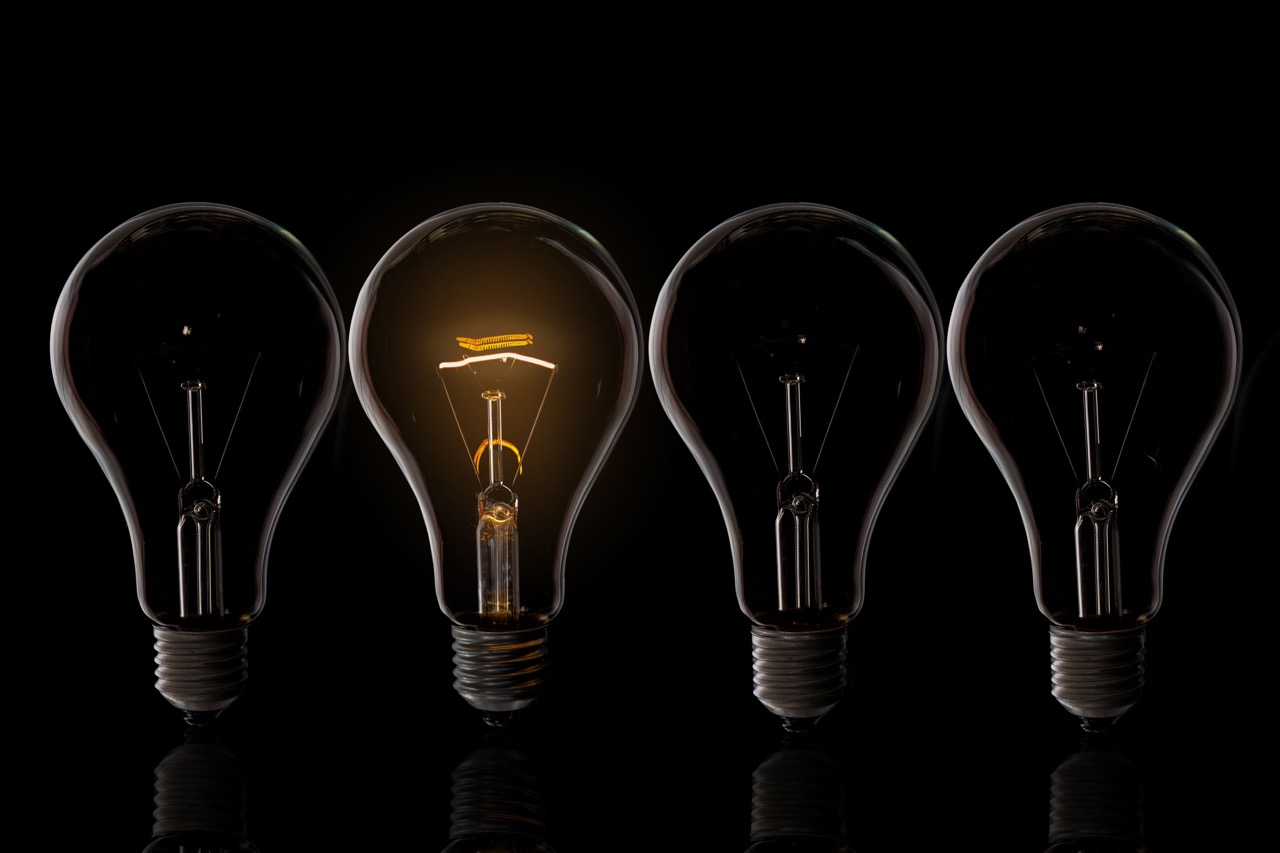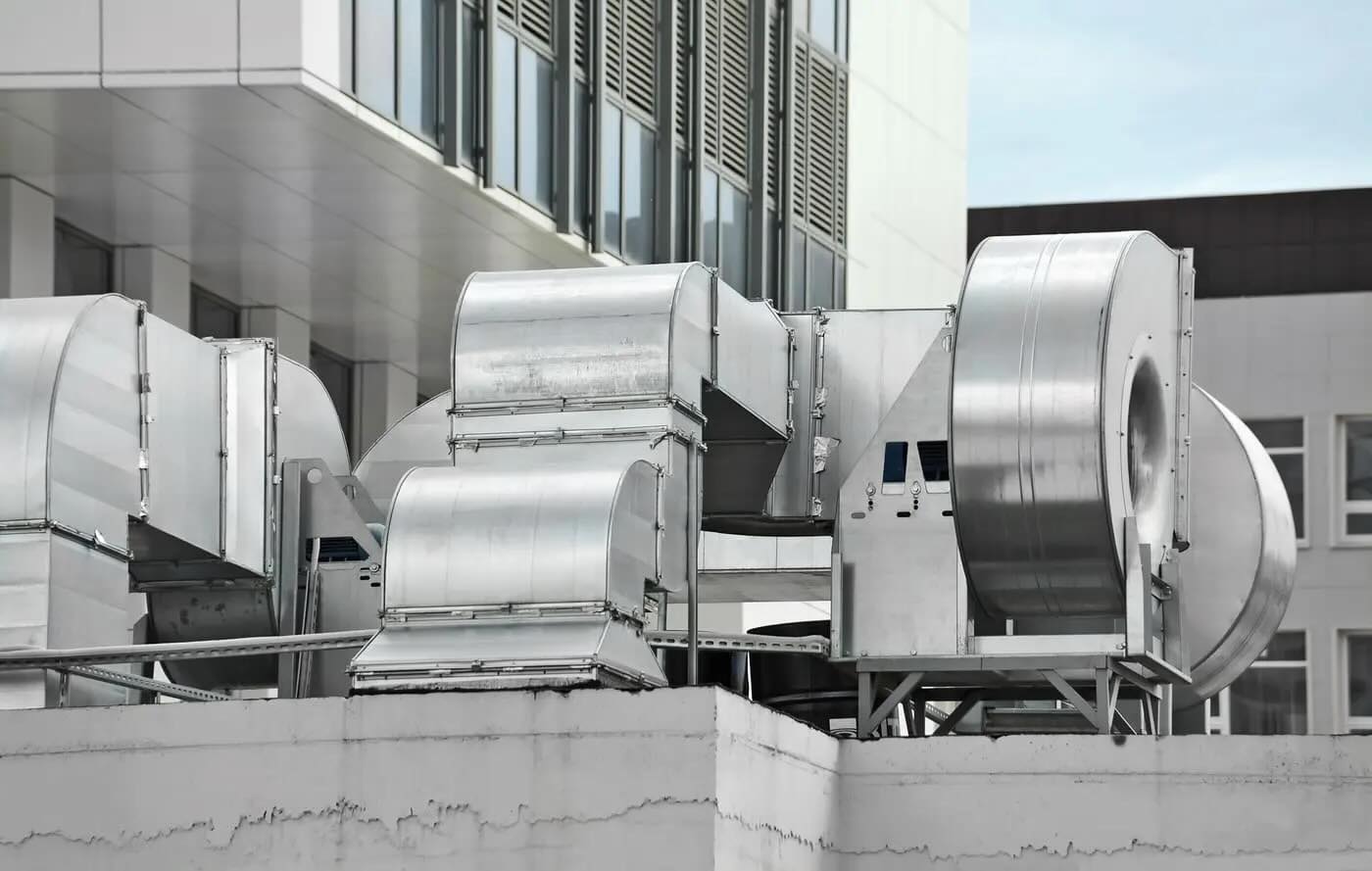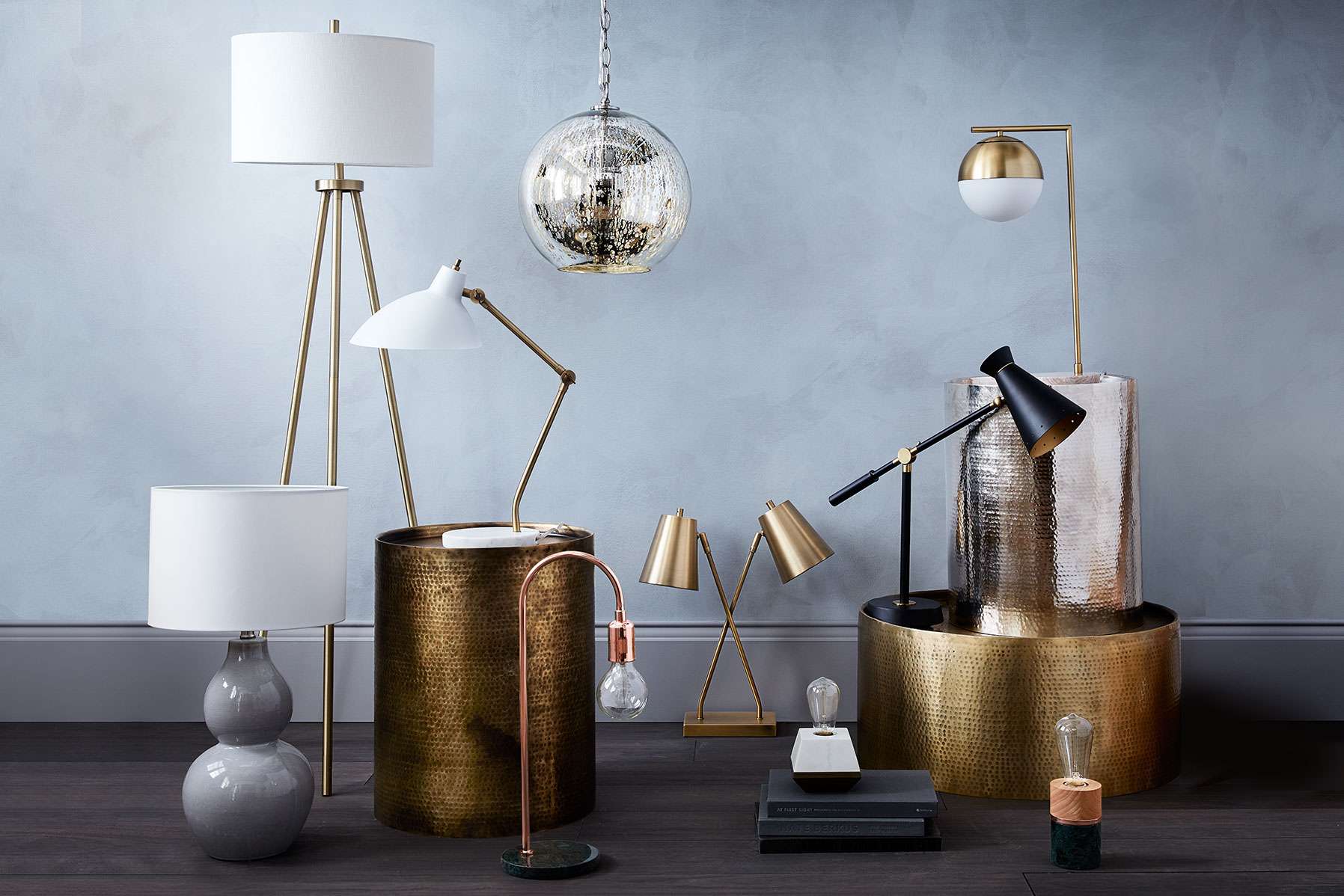

Furniture
What Is The Purpose Of A Lamp
Modified: January 6, 2024
Discover the purpose of a lamp in furniture. Explore how lamps serve both functional and aesthetic roles, enhancing the ambiance and functionality of your living space.
(Many of the links in this article redirect to a specific reviewed product. Your purchase of these products through affiliate links helps to generate commission for Storables.com, at no extra cost. Learn more)
Introduction
Welcome to the world of lamps, where functionality meets aesthetics. Lamps play a crucial role in our daily lives, providing us with the much-needed illumination and adding a touch of elegance to our spaces. Whether you’re working, reading, or simply relaxing, a lamp can create the perfect ambience and enhance the overall atmosphere of a room.
But what exactly is a lamp? In simple terms, a lamp is a device that produces light using electrical energy. It typically consists of a bulb or light source, a socket to hold the bulb, and a base for stability. However, lamps come in various shapes, sizes, and designs, making them a versatile and customizable lighting solution for any space.
Now that we understand the basic definition of a lamp, let’s delve deeper into its purpose and explore the various functions it serves in our lives.
Key Takeaways:
- Lamps are more than just sources of light; they are versatile design elements that enhance the ambiance and functionality of living spaces, offering a wide range of lighting effects and decorative options.
- Choosing the right lamp involves considering factors such as functionality, size, style, lighting needs, energy efficiency, material, and budget, ensuring that the selected lamp complements the interior decor while being mindful of energy savings and environmental sustainability.
Read more: What Is The Purpose Of A Toothbrush
Definition of a Lamp
A lamp, in its simplest form, is a lighting fixture designed to emit light. It consists of a light source, typically a bulb, contained within a housing that directs and controls the emitted light. The housing is often made of materials such as metal, glass, or plastic, which not only provide structural support but also contribute to the lamp’s aesthetic appeal.
There are many different types of lamps available today, including table lamps, floor lamps, desk lamps, pendant lamps, and chandeliers, each designed for specific purposes and to suit various styles of interior decor. These lamps may differ in size, shape, and design, offering a wide range of options to fit every personal preference and space requirement.
While lamps primarily serve the purpose of providing illumination, they have evolved beyond their functional role. Lamps now play a significant role in interior design, acting as decorative elements that can enhance the overall aesthetic of a room. From minimalistic and modern designs to vintage and ornate styles, lamps have become an integral part of interior decor, reflecting personal taste and adding personality to living spaces.
Moreover, the advancement in technology has introduced innovative features in modern lamps, such as dimmable switches, adjustable arms, and smart capabilities, allowing users to control the lighting intensity, direction, and even color temperature. These features not only enhance the convenience and flexibility of using lamps but also contribute to creating the desired ambiance for different activities and moods.
Overall, a lamp is more than just a lighting fixture. It brings together functionality, design, and personal expression, allowing us to transform a plain space into a warm and inviting environment. From cozy reading nooks to well-lit workstations, lamps serve as both practical and decorative elements that enhance our daily lives and make our spaces more comfortable and visually appealing.
Function of a Lamp
The primary function of a lamp is to provide illumination. Whether it’s for reading, working, or simply creating a warm and inviting atmosphere, lamps play a crucial role in lighting up our living spaces. However, the functionality of a lamp goes beyond just illuminating a room. Let’s explore some of the key functions that a lamp serves:
- Task Lighting: Lamps are often used for task lighting, where they provide focused and directed light for specific activities. For example, a desk lamp with an adjustable arm can provide targeted illumination for reading or working on a computer. Similarly, a bedside table lamp can offer convenient lighting for nighttime reading or other tasks.
- Ambient Lighting: In addition to task lighting, lamps also contribute to ambient lighting. They create a general level of illumination that sets the overall mood and atmosphere of a room. By strategically placing lamps around a space, you can achieve a balanced and comfortable level of lighting, making the room feel more inviting and cozy.
- Decorative Accent: Lamps are not only functional but also serve as decorative elements. They can add a touch of style and personality to a space. Whether it’s a sleek and modern table lamp or an elegant chandelier, lamps can enhance the aesthetic appeal of a room and become a focal point of its design.
- Highlighting Artwork and Décor: Lamps can be used to highlight specific artwork, sculptures, or other decorative pieces in a room. By positioning a lamp strategically, you can draw attention to certain elements and create a visually pleasing display.
- Mood Lighting: With the right combination of lamps and light bulbs, you can create various lighting effects to suit different moods and occasions. Dimmable lamps and those with adjustable brightness settings allow you to control the intensity of light, providing a cozy and intimate atmosphere for relaxation or a brighter setting for social gatherings.
- Nighttime Safety: Lamps can also serve a practical function by providing nighttime safety. Placing a lamp in a hallway or near staircases can prevent accidents by illuminating pathways and ensuring visibility during nighttime hours.
Overall, the function of a lamp extends beyond its basic purpose of providing light. Lamps contribute to the overall functionality, aesthetics, and ambiance of a space, making them an integral part of interior design and our daily lives.
Importance of Lighting
Lighting plays a crucial role in our daily lives and has a profound impact on our physical, emotional, and psychological well-being. The right lighting can transform a dull and uninspiring space into a vibrant and inviting environment. Let’s explore the importance of lighting in more detail:
- Visibility: Adequate lighting is essential for visibility and performing tasks efficiently. Whether it’s reading a book, preparing meals in the kitchen, or working on projects in an office, proper lighting ensures that we can see clearly, reducing eye strain and improving productivity.
- Mood and Atmosphere: Lighting has the power to create a specific mood and atmosphere in a room. Bright and vibrant lighting can make a space feel upbeat and energetic, while soft and warm lighting can create a cozy and relaxing ambiance. By choosing the right lighting fixtures and adjusting light levels, you can tailor the atmosphere to the desired mood for different occasions and activities.
- Enhanced Visual Appeal: Well-planned lighting can enhance the visual appeal of a room by highlighting architectural features, artwork, or decor pieces. By using strategic lighting, you can draw attention to specific areas, creating focal points and adding depth and dimension to the space.
- Health and Well-being: Lighting can have a significant impact on our health and well-being. Natural light is known to regulate our sleep-wake cycles, improve mood, and boost productivity. In the absence of natural light, artificial lighting can be used to mimic the positive effects of natural light, providing us with the necessary exposure to reduce fatigue and improve overall well-being.
- Safety and Security: Adequate lighting is essential for safety and security purposes. Well-lit outdoor areas deter potential intruders and provide a sense of safety. Similarly, indoor lighting ensures that there are no dark spots or shadowy areas that can pose a risk of accidents or falls.
- Energy Efficiency: With the increasing focus on sustainability and energy conservation, efficient lighting solutions have become more important than ever. By choosing energy-efficient lamps and light bulbs, such as LED or CFL bulbs, you can reduce energy consumption, lower electricity costs, and contribute to a greener environment.
Lighting is not just about functionality; it is a design element that can transform the look and feel of a space. By understanding the importance of lighting and investing in the right lighting solutions, you can create an inviting, aesthetically pleasing, and functional environment that supports your overall well-being and enhances your daily life experiences.
Different Types of Lamps
Lamps come in a wide variety of styles, sizes, and designs, each serving a different purpose and catering to different aesthetic preferences. Understanding the different types of lamps available can help you choose the right lighting fixture for your specific needs. Let’s explore some of the most common types of lamps:
- Table Lamps: Table lamps are versatile lighting fixtures that can be placed on tables, desks, or shelves. They come in various shapes and sizes, ranging from compact and portable to more substantial statement pieces. Table lamps are ideal for task lighting, providing focused illumination for reading, working, or creating a cozy ambiance in living spaces.
- Floor Lamps: Floor lamps are freestanding lamps that provide lighting at a higher level, typically standing on the floor next to seating areas or in corners of a room. They come in different styles, from sleek and modern to more traditional designs. Floor lamps are great for adding ambient or accent lighting, illuminating large areas, or creating dramatic visual effects in a room.
- Desk Lamps: Desk lamps are specifically designed for workspaces and study areas. They typically have adjustable arms or shades to direct light to the task at hand. Desk lamps provide focused lighting for tasks that require precision, such as reading, writing, or working on a computer.
- Pendant Lamps: Pendant lamps hang from the ceiling and are often used as a decorative lighting feature, as well as a functional source of light. They come in various shapes, sizes, and materials, allowing you to add a stylish lighting element to your space. Pendant lamps are particularly popular for illuminating dining areas, kitchen islands, or creating a statement in entryways.
- Chandeliers: Chandeliers are grand lighting fixtures that hang from the ceiling and feature multiple arms or branches with decorative elements. They are often made with crystals, glass, or metal, creating an elegant and glamorous look. Chandeliers are commonly used in dining rooms, entryways, or large living spaces to add a touch of sophistication and provide ambient lighting.
- Wall Sconces: Wall sconces are mounted on walls and are ideal for creating a soft, diffused lighting effect. They can be used as accent lights to highlight artwork or architectural features, or as functional lights for specific tasks, such as reading in bed or lighting up hallways.
- Task Lamps: Task lamps, also known as reading lamps or craft lamps, are designed to provide focused lighting for specific activities. They usually have adjustable arms, allowing you to direct the light exactly where it’s needed. Task lamps are commonly used for reading, sewing, or any activity that requires concentrated illumination.
These are just a few examples of the different types of lamps available in the market. Remember to consider the functionality, style, and size of a lamp when choosing the right one for your space. By selecting the appropriate lamp, you can create the perfect lighting solution that complements your interior design and meets your specific lighting needs.
When choosing a lamp, consider its purpose – whether it’s for task lighting, ambient lighting, or accent lighting. This will help you select the right style and brightness for your needs.
Read more: What Was The Purpose Of Television
Factors to Consider in Choosing a Lamp
Choosing the right lamp for your space involves more than just picking a design that appeals to you. It’s important to consider several factors to ensure that the lamp meets your lighting needs and complements your interior decor. Here are some key factors to consider when selecting a lamp:
- Functionality: Determine the purpose and function of the lamp. Are you looking for task lighting, ambient lighting, or both? Consider the specific activities that will take place in the area where the lamp will be used, such as reading, working, or simply creating a cozy atmosphere.
- Size and Scale: Assess the size and scale of the lamp in relation to the space where it will be placed. Will it be a statement piece or a subtle addition to the room? Take into account the dimensions of the furniture or surface it will be sitting on to ensure a proportional look.
- Style and Design: Consider the overall style and design of your space before selecting a lamp. Decide whether you want the lamp to blend in seamlessly with your existing decor or act as a focal point with a bold design. You can choose from various styles, such as modern, traditional, vintage, or eclectic, to match your personal taste and interior design aesthetic.
- Lighting Needs: Evaluate the level of lighting required for the space. Does the lamp need to provide task lighting or ambient lighting? Consider the wattage and color temperature of the bulb to ensure it delivers the desired amount and quality of light. Also, assess the direction of the light emitted by the lamp to ensure it meets your specific lighting needs.
- Material and Finish: Pay attention to the material and finish of the lamp, as it contributes to the overall look and durability. Common materials include metal, glass, ceramic, or fabric. Ensure that the material and finish complement your existing decor and are easy to clean and maintain.
- Energy Efficiency: Consider the energy efficiency of the lamp. Look for lamps that are compatible with energy-saving light bulbs, such as LED bulbs or CFL bulbs. Energy-efficient lamps not only help reduce energy consumption but also contribute to lower utility bills and a greener environment.
- Budget: Set a budget for your lamp purchase. Lamps are available at various price points, so determining your budget beforehand will help you narrow down your options and find a lamp that fits within your financial means.
By considering these factors, you can make an informed decision when selecting a lamp. Keep in mind that the right lamp should not only provide the desired lighting but also enhance the overall atmosphere and aesthetic of your space. Take your time to explore different options and choose a lamp that not only meets your functional needs but also brings joy and style to your living environment.
Different Lighting Effects
Lighting is a powerful tool that can create various effects and transform the mood and ambiance of a space. By understanding different lighting effects, you can use lighting fixtures, including lamps, to create the desired atmosphere. Here are some common lighting effects to consider:
- Ambient Lighting: Ambient lighting provides overall illumination to a room, creating a comfortable and inviting atmosphere. It casts a soft, diffused light that eliminates harsh shadows and evenly distributes light. Ambient lighting can be achieved using lamps with shades or by using ceiling-mounted fixtures that provide a gentle glow.
- Task Lighting: Task lighting is concentrated lighting that is intended for specific activities such as reading, writing, or cooking. It provides focused illumination to a particular area, allowing for better visibility and reduced eye strain. Task lighting can be achieved using adjustable desk lamps, floor lamps, or pendant lamps with directional light.
- Accent Lighting: Accent lighting is used to highlight specific objects, architectural features, or artwork in a space. It adds depth and visual interest by creating contrast and drawing attention to particular areas. Accent lighting can be achieved using adjustable spotlights, wall sconces, or track lighting.
- Wall Washing: Wall washing refers to the technique of placing light fixtures to evenly illuminate a large section of a wall. It creates a soft, even glow, highlighting the texture and color of the wall and adding depth to the room. Wall washing can be achieved using wall-mounted lamps, recessed lights, or track lighting.
- Uplighting: Uplighting involves directing light upwards to create a dramatic effect. It can enhance the atmosphere, accentuate architectural elements, or create a sense of height in a space. Uplighting can be achieved using floor lamps, wall-mounted fixtures, or recessed lights positioned to face upwards.
- Downlighting: Downlighting involves directing light downwards, casting a focused beam of light onto an area or object. It creates a cozy and intimate atmosphere and can be used to highlight specific features, surfaces, or artwork. Downlighting can be achieved using pendant lamps, recessed lights, or track lighting that is positioned to face downwards.
- Colored Lighting: Colored lighting can add a lively and vibrant touch to a space, creating a unique visual effect. It can be used to set a specific mood or theme, for example, using warm hues for a cozy ambiance or cool hues for a soothing atmosphere. Colored lighting can be achieved using color-changing LED bulbs or lamps with colored shades or filters.
By incorporating different lighting effects into your space, you can customize the ambiance and create a visually appealing environment that suits your needs and preferences. Experiment with the placement, intensity, and color of light to achieve the desired effect, and don’t be afraid to mix and match different lighting techniques to create a unique and captivating atmosphere.
Energy Efficiency of Lamps
In today’s environmentally conscious world, energy efficiency is a crucial factor to consider when choosing lighting fixtures, including lamps. Energy-efficient lamps not only help reduce electricity consumption and lower utility bills but also contribute to a greener and more sustainable future. Here are some key points about the energy efficiency of lamps:
- LED Technology: Light Emitting Diode (LED) lamps are highly energy efficient and have revolutionized the lighting industry. Compared to traditional incandescent bulbs, LED lamps consume significantly less energy while still providing the same or even better brightness. LED lamps can last up to 25 times longer than incandescent bulbs, reducing the need for frequent replacements.
- Lower Energy Consumption: Energy-efficient lamps, such as LED bulbs, use up to 80% less energy compared to incandescent bulbs. This substantial reduction in energy consumption translates to significant cost savings on electricity bills, especially in spaces where multiple lamps are used for extended periods.
- Reduced Heat Emission: Energy-efficient lamps produce much less heat compared to traditional incandescent bulbs. This not only minimizes the risk of fire hazards but also reduces the strain on cooling systems, resulting in additional energy savings in buildings or rooms that require air conditioning.
- Environmental Impact: By choosing energy-efficient lamps, you can reduce your carbon footprint and contribute to environmental sustainability. Traditional incandescent bulbs waste a significant amount of energy through heat emission, while energy-efficient lamps convert a higher percentage of energy into light, resulting in less energy waste and greenhouse gas emissions.
- Diverse Options: Energy-efficient lamps are available in a wide range of options to suit different needs and preferences. LED lamps come in various shapes, sizes, and color temperatures, allowing you to find the perfect lighting solution for any space. Whether you’re looking for warm white light for a cozy atmosphere or cool white light for a vibrant workspace, there is an energy-efficient lamp to match your requirements.
- Long Lifespan: Energy-efficient lamps, particularly LED lamps, have an impressive lifespan compared to traditional bulbs. LED lamps can last up to 25,000 to 50,000 hours, while incandescent bulbs typically last around 1,000 hours. This longevity reduces the frequency of lamp replacements, resulting in less waste and cost savings in the long run.
- Incentives and Rebates: Many governments and utility companies offer incentives and rebates for energy-efficient lighting choices. These programs encourage the use of energy-efficient lamps and help offset the initial cost of purchasing them, making it even more affordable to switch to energy-saving lighting solutions.
When choosing a lamp, consider the energy efficiency rating and opt for lamps that carry the ENERGY STAR label. This certification ensures that the lamp meets rigorous energy efficiency standards set by the Environmental Protection Agency (EPA). By selecting energy-efficient lamps, you can enjoy long-lasting, cost-effective, and environmentally friendly lighting solutions that help make a positive impact on both your wallet and the planet.
Maintenance and Care of Lamps
Maintaining and caring for your lamps not only keeps them looking their best but also ensures their optimal performance and longevity. Here are some essential tips to help you effectively maintain and care for your lamps:
- Cleaning: Regularly dust your lamps using a soft, lint-free cloth or a feather duster to prevent the accumulation of dirt and debris. For metal or glass lamps, you can use a damp cloth or a non-abrasive cleaner to gently remove smudges or stains. Make sure to unplug the lamp and allow it to completely dry before reassembling and turning it back on.
- Bulb Replacement: Replace light bulbs as needed, following the manufacturer’s recommendations. When replacing bulbs, be sure to choose the correct wattage and type of bulb specified by the lamp manufacturer. Avoid touching halogen bulbs with bare hands as the oils from your skin can reduce their lifespan. Use a clean cloth or gloves while handling halogen bulbs.
- Lampshade Care: If your lamp has a fabric or paper lampshade, avoid using water or liquid cleaners, as they may cause damage or discoloration. Instead, use a dry cloth or a soft brush to gently remove dust and dirt. For more stubborn stains, consult the manufacturer’s instructions or seek professional cleaning services.
- Base and Cord Maintenance: Check the lamp’s base and cord for any signs of damage or wear regularly. If you notice any frayed cords, exposed wires, or loose fittings, discontinue use immediately and have them repaired or replaced by a qualified professional. Avoid pulling the cord to unplug the lamp; instead, grasp the plug itself to disconnect it from the power source.
- Proper Storage: If you need to store your lamps for an extended period, ensure they are clean and completely dry before packing them away. Use protective covers or wrapping materials to prevent any scratching or damage during transportation or storage. Store lamps in a dry and cool location to avoid deterioration.
- Regular Inspections: Periodically inspect your lamps for any loose screws, wobbly parts, or signs of wear. Tighten any loose screws using appropriate tools but be cautious not to overtighten and damage the lamp. Address any issues promptly to prevent further damage or safety hazards.
- Placement: When placing lamps, consider factors such as heat sources, humidity, and direct sunlight. Keep lamps away from flammable materials and avoid placing them near curtains, bedding, or other fabrics that could come into contact with the lampshade or bulb. Direct sunlight can cause fading or discoloration, so consider using curtains or shades to protect your lamps from prolonged exposure.
By following these maintenance and care tips, you can prolong the lifespan of your lamps, ensure their safe operation, and keep them looking beautiful for years to come. Regular cleaning, proper bulb replacement, and diligent inspections will help maintain the functionality and aesthetic appeal of your lamps, allowing you to continue enjoying their illumination and enhancing the ambiance of your living spaces.
Read more: What Is The Purpose Of A Toaster
Conclusion
Lamps are more than just functional lighting fixtures; they are essential elements in creating a well-lit and visually appealing space. From providing the right amount of light for specific tasks to enhancing the overall ambiance, lamps play a crucial role in our daily lives and interior design. Understanding the purpose, different types, and functions of lamps allows us to make informed decisions when choosing the right lighting solution for our spaces.
Throughout this article, we explored the definition of a lamp and how it has evolved beyond its basic purpose into a decorative element that adds personality to our living spaces. We discussed the importance of lighting in terms of visibility, mood creation, enhanced visual appeal, and even nighttime safety. Different lighting effects, such as ambient lighting, task lighting, and accent lighting, were explored to showcase the versatility and impact of lighting on the overall atmosphere of a room.
Selecting the right lamp involves considering factors such as functionality, size, style, lighting needs, energy efficiency, material, and budget. By carefully evaluating these factors, we can choose lamps that truly meet our needs and complement our interior decor while being mindful of energy savings and environmental sustainability.
Maintaining and caring for our lamps is equally important to ensure their optimal performance and longevity. Regular cleaning, proper bulb replacement, inspection for any signs of wear, and safe storage contribute to the durability and visual appeal of our lamps, allowing us to enjoy their benefits for years to come.
In conclusion, lamps are essential components of our living spaces and have a significant impact on both functionality and aesthetics. By understanding the purpose, types, functions, and maintenance of lamps, we can make informed decisions that enhance our interior design, create the perfect lighting ambiance, and contribute to energy efficiency and sustainability.
Frequently Asked Questions about What Is The Purpose Of A Lamp
Was this page helpful?
At Storables.com, we guarantee accurate and reliable information. Our content, validated by Expert Board Contributors, is crafted following stringent Editorial Policies. We're committed to providing you with well-researched, expert-backed insights for all your informational needs.
